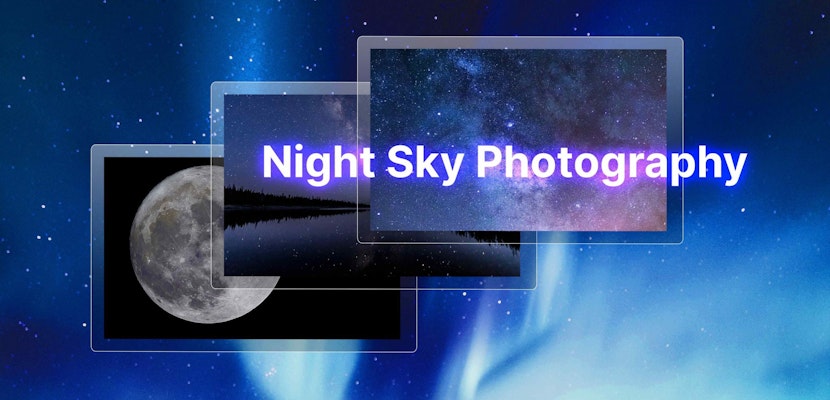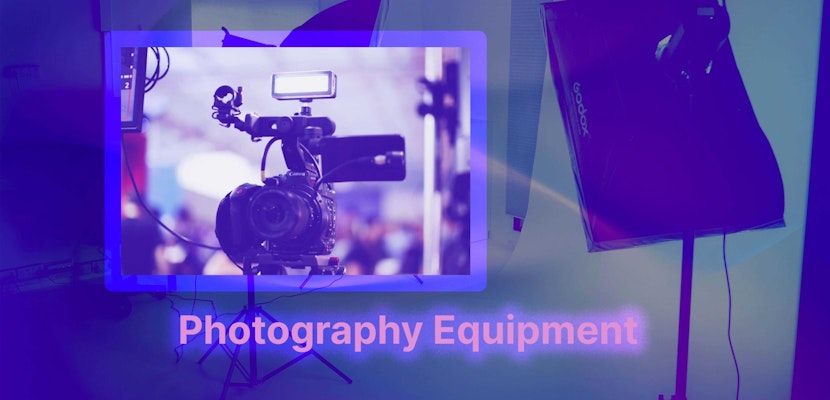For some photographers film was the format they learned on. For other photographers, the digital revolution arrived before they started their lives behind the lens. While most photographers have now switched to digital, film photography remains a valuable and much-loved means of creating images.
If you’ve never shot on film, you should give it a go! It’ll open your eyes to technical and creative processes that you might not really have encountered or examined, and it will help you to develop your all-around photography skills.
Part 1: What is Film Photography?
Rather than recording images on a digital imaging sensor, which you then transfer to your computer to process, film photography works by exposing photo-sensitive material to light that creates a negative. This negative is then developed onto paper in order to produce a photographic image.
Unlike digital photography, where you are able to shoot thousands of photos onto a single SD card, film photography is highly limited. A reel of film for a 35mm camera has only 24 or 36 exposures, meaning that you can only create 24 or 36 images before you need to change the reel and develop it.

While this might sound restrictive, it does have its benefits. Film photography forces you to slow down and consider every shot because each exposure has to count. You need to be accurate in your exposure and certain of your composition. Practicing on film makes you both a better creative and technical photographer. There’s also an element of surprise and patience to it. You have to wait for a reel of film to be developed, so you are never quite certain if your shots will have worked, or come out as you envisaged. There’s no instant gratification of looking at the LCD screen of your camera and post-processing straight after the shoot.

It is possible to develop your own film at home, and this, too, can really enhance your knowledge and understanding of the photographic process. But if you are concerned about purchasing, storing and using the chemicals required for it, or just making a mess of your images, then it’s advised to send your film to a professional processing lab.
Part 2: 12 Surefire Creative Tips & Techniques for Film Photography
If you’ve picked up your first analog camera and are wondering where to start, or perhaps looking for some fun film photography projects if you’ve mastered the basics, here are 12 pointers for film photography for beginners.

1. Start Simple
You can pick up 35mm film cameras relatively cheaply second-hand. It’s also easier to purchase 35mm film stock and it’s processed in more labs than, say, 120. With 35mm, you have either 24 or 36 exposures per roll of film, which gives you more opportunity to experiment than with 120 film. They often only have 12 or 16 exposures. 35mm film photography is a bit more cost-effective when you’re starting out and gives you a bit more leeway for mistakes.
If you’ve chosen an SLR rather than a compact (for example an Olympus Trip), then start out with a 35 or 50mm prime lens. They offer you better quality for your money and with fewer variables give you a solid starting point.
2. Only Shoot One Roll at a Time
You might be incredibly enthusiastic to try out your analog camera in as many situations as possible, but do take things steady. Film shooting is different from digital and it will require some adjustment. The best way to do this is to shoot a roll of film, develop it, and then assess your images. What worked? What didn’t? What do you need to pay more attention to? Give yourself plenty of time and don’t be disheartened if things don’t go to plan immediately. It’s a learning curve.

3. Over Rather Than Under-Expose
While you might be accustomed to under-exposing in digital photography so that you can prevent blowing your highlights and draw the detail out of the shadows, the opposite is true with film photography. Aim for a little over-exposure that will allow you to adjust the exposure when you are developing.
4. Download a Light Meter App
Vintage 35mm film cameras will likely not have a built-in light meter, so it’s easiest to download a light metering app to your phone to ensure that you get a good exposure with every frame. (You can also purchase handheld light meters.)
If you’re stuck without a light meter for whatever reason, remember the Sunny 16 rule. On a sunny day outside at noon, an aperture of ƒ/16 with a shutter will require a shutter speed that reciprocates the ISO for a good exposure. So for an ISO of 100, use a shutter speed of 1/125; for a 200 ISO, choose a 1/250 shutter speed. This is your base point. If you want a larger aperture by three stops, so ƒ/5.6, then adjust your shutter speed to 1/800 with ISO100 to accommodate it.

5. Make a Note of Your Settings
Digital cameras produce images with EXIF data, so you can always look up what time of day you were shooting and what your settings were. Analog images don’t come with this embedded information. Instead, you’ll have to note down the time and settings yourself. This is important so that you can judge what works and what doesn’t for the subjects that you photograph and the conditions when you shoot.
6. Use a Professional Lab
Developing your own film can be fun, but it might be a good idea at the start of your film photography project to engage a professional developing lab. A professional lab will be able to offer you lots of advice to help you get the best out of the film experience and will be able to provide more specialist processes, for example pushing (leaving in developer for a longer period of time) or pulling (shortening the developer period), if you need it.

7. Make Use of Accidents
Maybe there was a light leak, vignette, and unintentional double exposure. Or perhaps the exposure wasn’t quite right and the focus could be too soft. Embrace it. It’s all a part of the wonderful and unique unpredictability of film and instead use them to your advantage. Add new life to ordinary shots and it might also become your signature look, think about replicating it on purpose!
8. Beauty is Unexpected
While shooting on film is a meticulous process, it also produces unintended results. It also allows you to experiment with unusual processes and look for beauty in places where you might not have expected it. From expired films to unconventional developing solutions, enjoy the unusual that film can present you. What you can actually expect with film photography are distinct and unrepeatable effects that produce photos with a unique personality. As they say, focus more on the process rather than the final goal.

9. Don’t Discard Expired Film
You might be inclined to discard film that has passed its use-by date, but don’t. The degradation can reduce its sensitivity to light and it will likely give you oversaturated colors and maybe a cloudy or foggy feel to your images, so be prepared for that. Obviously don’t use expired film if you’re looking for truer-to-life images. It’s worth letting your developers know if you’ve used expired film so they won’t be alarmed and think there has been a mistake in processing.

10. Sharpen Skills with Self-Portraits
This is a sound tip for any type of photography, not just film photography projects: but practice with yourself as the model. First, it means that you can take as long as necessary to set up your shot according to your requirements and the conditions. Second, if it does go wrong or turn out not exactly as you were expecting, you won’t be left with disappointed subjects.
11. Try Film Soup
Film soup is when you immerse your exposed roll of film in a mixture of substances so that when it’s developed, you don’t know exactly what you’ll get. It might have an impact on the colors, or on the exposure.
A basic film soup is a mixture of boiled water, dish soap (washing up liquid), and salt. You can add other ingredients that you might have in your kitchen, for example, food coloring, lemon juice, tea, or baking soda (bicarb).
You soak your roll of film in it for up to 24 hours and then rinse it for five minutes, or until it stops being soapy. Let it dry out on a windowsill or packed with silica gel for about a month. Then process it. You might find that you’ll have to process it yourself because professional labs cannot afford to contaminate their developing tanks with your unusual choices!

12. Use a Prism
You can pick up prisms relatively cheaply and with them, you can play with your images in innumerable ways. Just focus your camera, place the prism directly before the lens and turn it until you produce the effect that you want. You might get a rainbow effect, a reflection, or blurred patches. Taa-dah!
Film photography is an ideal medium for exploring your creative side while at the same time practicing your fundamental photographic skills. Even if you don’t want to explore the possibilities of film soup, prisms, or double exposures, by trying film photography you will hone your skills and help to make yourself an overall more accomplished photographer.



























